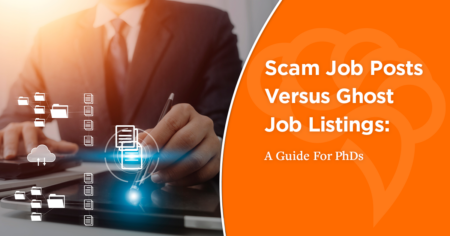4 Questions That Turn LinkedIn Connection Requests Into Industry Job Referrals

Referrals are extremely powerful.
They can give your resume directly to a hiring manager, help you skip steps of the hiring process, and even have a hiring committee reverse a rejection.
One of our transitioned members recently shared the following story about a candidate they referred for a position at their company.
Someone connected with me and sent me a message on LinkedIn. As they were polite, I agreed to have a voice chat.
I attended a few meetings in my company and found out they were looking for someone with a profile that fits this person’s. So, I invited them to apply.
The application was rejected and they contacted me, thanking me for the opportunity.
However, I reached out to the hiring manager who contacted talent acquisition because I knew my candidate deserved an interview.
End of the story: they had the interview and progressed to the next stage.
If you are struggling to even get responses to your connection requests on LinkedIn, stories like this might feel completely out of reach, but they can happen.
You just need to follow the process. Stop being invisible and prioritize your networking efforts.
Informational Interviews Are The Key To Turning LinkedIn Connections Into Referrals
A PhD-level job search is a multiple-step process where every problem is followed by another problem.
I have seen many PhDs who think that they would get hired if they could get a reply after sending a connection request. But when they get the reply, they don’t know how to keep the conversation going. So, they get stuck again.
Having a process and understanding the steps of that process ahead of time will help you anticipate future problems and avoid roadblocks.

This is why I created the three-step job search referral strategy, a proprietary methodology that helps PhDs navigate the networking process – from connecting with an industry professional to getting a referral.
The three steps of the strategy are getting a reply, adding value, and setting up an informational interview.
Today, I will focus on the third step, specifically on how to jump right into an informational interview.
The key is not to let your connection know that they’re taking part in an informational interview.
You should never use the term “informational interview” when talking with your connections. It adds too much pressure and you want to keep the conversation casual.
Instead, ask your connection to grab a coffee, set up a 10-minute phone or video call, or even start a conversation on LinkedIn Chat, and start asking casual questions.
Below, I will give you the questions you need to ask and the order in which you should ask them to turn informational interviews into referrals.

How To Carry Networking Conversations To Deeper Levels Of Professional Intimacy
PhDs make two main mistakes when it comes to generating referrals. They either go too deep too soon and end up burning a bridge, or they never go deep enough to build a long lasting relationship.
To avoid these mistakes and get referrals, you need to understand the process of building professional intimacy and how to go from one level to the next. You will achieve this by focusing on four simple questions.
1. What are you currently working on that you’re excited about?
This question will give you access to the first level of professional intimacy, where you keep things professional but want to get the conversation going. It will also help you frame the conversation positively.
You can ask this question once you get a reply after the initial connection request or during a networking event – either online or in person.
Everyone likes to talk about things that excite them. So, you can be confident that your connection will take this cue and give you information that will help you move to the next level of professional intimacy.
While you’re at the first level, you can also ask questions like: What are you doing on a day-to-day basis? What parts of the job do you find most enjoyable? What surprised you when you started working in this field?
Just remember to ask positive questions that prompt positive answers.
2. What are some of the challenges associated with your role?
Though this is an extension of the first question, but it will allow you to go a bit deeper and reach the second level of professional intimacy.
In the first level, you asked your connection to talk about what excites them about their job; most people will focus on the good things at this stage. Once you ask about the challenges, you subtly go a bit deeper, while keeping the conversation focused on their job.
Here is an example of how to transition for the first to second level of intimacy: “That’s incredible. I really love hearing about AB and C that you mentioned. It sounds challenging though. So, what are some of the challenges that are associated with that project right now?”
In this second level, you’re elevating their credibility and work ethic by showing appreciation for the challenges they’ve overcome.
Here are some additional questions you can ask in the second level of professional intimacy: How were you able to spearhead that project? Can you tell me a little about the team that you’re working with? What parts of the job do you find the most challenging? What skills do you need to leverage to be able to do that work? What qualifications do you need for that particular role?
3. How did you get hired into your role in the first place?
After you’ve learned about the fulfilling and challenging aspects of your connection’s role, it’s time to go deeper – to the third level of professional intimacy – and ask about their story.

This will change the context a little bit, but you can still make a subtle transition: “It’s amazing how your job is both challenging and fulfilling. I’m wondering, though. How did you get hired in your current position?”
Always use the word “you” when asking this question. This way, your connection will answer more freely because they can focus on their subjective experience. So, they don’t have to think through their answers.
At the third level of professional intimacy, you can also ask: What did the hiring process look like for you? In your opinion, how has the company changed since you were hired? What are your plans for career progression?
Remember to ask experiential, opinion-based questions that focus on their personal experience.
4. Are there any new roles opening up in your hiring pipeline?
In the fourth and final level of professional intimacy, you will shift the conversation to you.
You can do this by linking their story to your transition plans:
“Wow. I never would have thought of that. That’s a great insight. I didn’t realize that you could have three rounds of video interviews. That’s quite the process. Congratulations again on the role. You know, I was thinking I might be a good fit for this company. Are there any jobs opening up in the pipeline or anything coming up?”
This is the simplest, subtlest way to set you up for a referral because they might tell you about positions that are not even open yet. If they’re enjoying talking to you, they might even say, “Well, give me your resume and I’ll keep you in mind.”
All steps of the interview process will set you up for that final moment, referrals. Since you showed interest in them at the beginning, they will show interest in you and they will know you are a serious candidate they can vouch for and give you referrals.
Here are some other questions you can ask at the last stage: Would you be okay if I gave you a copy of my resume? Could you pass my resume on to the hiring manager in case a position opens up that I’m a good fit for? Do you know who the hiring manager is for this open position at your company?
Sometimes, you might not even have to ask the fourth question. At some point, they will stop talking about them and ask you about you, about your plans for the future. And you have to be ready to answer: “I’m looking to transition into a company just like this.”

Bonus question – Is there anyone you could connect me to who might be able to tell me more about your company?
If you follow these steps and ask prompting questions, you will turn a connection into a referral, but remember that networking is a never ending process. By closing the interview asking if they can introduce someone else, you set yourself up for a new connection.
You can also close the informational interview asking: “Is there anything else you think I should know?” Keep it open-ended. You’ll be surprised about the kind of information they will offer.
Concluding Remarks
Building a strong network and generating referrals are the most important parts of your transition, but they can be exhausting. The best way to get results and avoid exhaustion is to follow a process that leads you from first connection to referrals. Don’t ask directly for an informational interview and learn to leverage the levels of professional intimacy. Start the conversation focusing on what excites your connection about their role. Then, focus on the challenges they are facing. Use this knowledge to spark a conversation about their transition. At the last level, focus the conversation on you and ask them about future positions at their company that might be a good fit. Close your informational interviews asking for possible new connections. Following this process will ensure that you build a healthy network and never have to apply using an online portal again.
If you’re ready to start your transition into industry, you can apply to book a free Transition Call with our founder Isaiah Hankel, PhD or one of our Transition Specialists. Apply to book a Transition Call here.

ABOUT ISAIAH HANKEL, PHD
CEO, CHEEKY SCIENTIST & SUCCESS MENTOR TO PHDS
Dr. Isaiah Hankel is the Founder and CEO of Cheeky Scientist. His articles, podcasts and trainings are consumed annually by millions of PhDs and other professionals in hundreds of different countries. He has helped PhDs transition into top companies like Amazon, Google, Apple, Intel, Dow Chemical, BASF, Merck, Genentech, Home Depot, Nestle, Hilton, SpaceX, Tesla, Syngenta, the CDC, UN and Ford Foundation.
Dr. Hankel has published 3X bestselling books and his latest book, The Power of a PhD, debuted on the Barnes & Noble bestseller list. His methods for getting PhDs hired have been featured in the Harvard Business Review, Nature, Forbes, The Guardian, Fast Company, Entrepreneur Magazine and Success Magazine.
More Written by Isaiah Hankel, PhD































